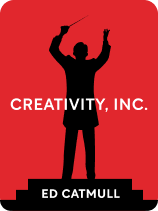

This article is an excerpt from the Shortform book guide to "Creativity, Inc." by Ed Catmull. Shortform has the world's best summaries and analyses of books you should be reading.
Like this article? Sign up for a free trial here .
How can art and technology come together for creative experimentation? How has Pixar used technology to innovate in its art?
Creative experimentation is about pushing beyond your comfort zone and trying out new things. In this way, Pixar has been able to do more with its storytelling.
Read more about creative experimentation and its benefits at Pixar.
Combine Art With Technology
While it’s tempting to stick to methods that you already know, using new technology can allow your team to create new works in an original and more effective way. For example, where artists once had to use a pencil and paper to create sketches, tablets now allow them to create digital art that they can easily share and modify. This use of technology and creative experimentation speed up their process and give them more creative freedom.
Technology can inspire creativity and creative experimentation. As technology continues to improve, artists can develop projects in a wholly original way. For example, Pixar used new computer technologies to create films unlike anything anyone had ever seen before.
In a smaller-scale example, Pixar’s director, Brad Bird, wanted a way to sketch over top of digital models to help him give clearer feedback. For instance, if a character’s expression wasn’t reading, Bird wanted to be able to sketch something over the model that reflected the emotional state he was trying to evoke. The software team managed to develop a program that allowed Bird to deliver feedback in this way. The new technology streamlined the feedback process and gave animators and modelers a clearer vision of what changes their director was requesting.
Creative Experimentation Space
Creative experimentation projects give you a space to take risks without the pressure of making a profit. They allow your organization to explore new ideas, find better ways of working, and give employees with potential more experience. Think of these environments as a creative company’s R&D department. The nature and costs of these spaces vary from company to company, but the benefits of exploring new concepts in a safe space can yield industry-shaking results.
For example, Pixar likes to experiment by creating short films. While these projects have become a beloved and iconic part of Pixar’s releases (they show one before every feature film), these shorts aren’t meant to turn a profit. Instead, they benefit the company in the following ways:
- Team members gain experience with creative experimentation. Because the teams working on short films are smaller than those working on feature-length films, everyone involved in the project has to be involved in multiple phases of production. This gives them a wider range of experience that helps them when they work on larger projects.
- The shorts help Pixar work through obstacles. Though most technological advancements happen on feature films, some breakthroughs were made by giving short films clear objectives. For instance, Geri’s Game, which ran before A Bug’s Life, was created with the goal of discovering a better way to animate human characters.
- If a short project fails, Pixar can move on. This allows them to put potential directors and artists in charge without risking a box office bomb. For instance, Catmull was once interested in a children’s book author who wanted to direct a feature film for Pixar. As a test, they had him helm one of their short films. The production didn’t go smoothly, and the final product was meandering and lacked an emotional spine. Because of this result, Catmull decided not to move forward on a feature led by this individual.

———End of Preview———
Like what you just read? Read the rest of the world's best book summary and analysis of Ed Catmull's "Creativity, Inc." at Shortform .
Here's what you'll find in our full Creativity, Inc. summary :
- How Pixar went from selling computers to successful animation studio
- What it takes to build a creative workplace culture
- Why George Lucas sold Pixar to Steve Jobs






